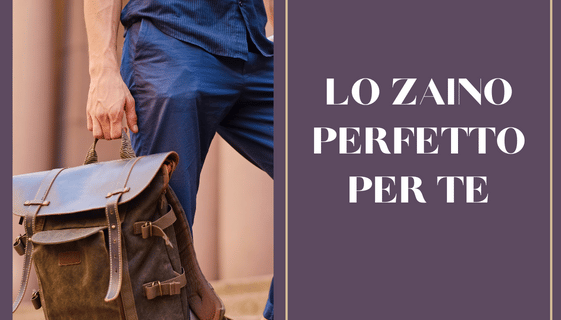Lo zaino ormai è diventato uno degli accessori più popolari ed in voga del momento. Questo grazie alla sua funzionalità e praticità che lo rende perfetto da utilizzare nella nostra vita quotidiana. Il dilemma nasce quando non si hanno le idee chiare sul come scegliere lo zaino che fa al caso nostro. Soprattutto di fronte alla vasta scelta che offre il mercato. In questo articolo vi mostrerò alcuni consigli che riteniamo essenziali nella scelta di uno zaino.

Ecco qua i nostri 3 consigli su come scegliere lo zaino perfetto
Qualità
Per natura lo zaino è soggetto ad urti ed usura nel corso della sua vita, sia che si tratti del tuo fedele compagno di viaggio giornaliero, sia per uno dedicato allo sport o a scopo vacanziero. Nonostante ciò, è sotto inteso che uno zaino debba durare nel tempo, persino le versioni economiche in Nylon. Per questo motivo, considerando il frequente utilizzo di uno zaino, perchè non spendere un pò di più ed acquistarne uno che, non solo avrà un bell’aspetto, ma sarà anche un piacere da portare? Quando si parla di qualità e quindi di durabilità, il primo materiale che viene in mente e senz’ombra di dubbio la PELLE resistente e di bell’aspetto, che lascia una sensazione sia al tatto che all’olfatto piacevole che gli conferiscono un vero senso di superiorità. L’Italia è famosa per la lavorazione artigianale della pelle, dell’utilizzo di materiali di ottima qualità unita ad uno stile unico in tutto il mondo e sono proprio questi i pilastri sui quali Florence Leather Market basa la creazione dei suoi prodotti.
FUNZIONALITÀ
Gli zaini ormai sono disponibili in tutte le forme e dimensioni ed è per questo che, prima di avventarsi ad un acquisto affrettato, consigliamo di capire bene l’utilizzo di quest’ultimo e di conseguenza capire quali saranno le sue dimensioni ideali. Se serve uno zaino di utilizzo giornaliero per un tragitto casa lavoro, o si sta pensando di comprare uno zaino per andare all’università, dobbiamo tenere in considerazione una capienza necessaria per eventuali dispositivi come il laptop, libri e persino il pranzo. Un esempio potrebbe essere il nostro “Unisex leather backpack” caratterizzato dalla sua semplicità e versatilità. Se in alternativa cerchiamo uno zaino in sostituzione alla borsetta, possiamo optare per zaini dal volume inferiore e concentrarci sulla praticità d’uso. Alcuni esempi potrebbero essere lo zaino “Luminosa” e lo zaino “Gabriele“. Nel prendere la decisione sulla taglia, è importante considerare anche la propria statura. Se sei minuta, uno zaino troppo grande potrebbe non essere adatto a te. Fai attenzione anche al comfort. Se stai cercando uno zaino piccolo e leggero, le cinghie più sottili andranno bene ma, al contrario, se lo utilizzerai per portare cose pesanti e per lunghi periodi, potresti cercarne uno con cinghie più spesse.
STILE
La scelta di uno zaino è sempre una decisione personale che sarà influenzata dal tuo stile di vita e dalle tue esigenze, questo non significa che si debba abbandonare il buongusto. Florence Leather Market porta con sé lo stile Italiano realizzando zaini borse ed accessori per ogni evenienza e occasione:
- Serve uno zaino semplice e sobrio per uscire? Potreste optare per il nostro classico Fiorella leather backpack.
- Sei frizzante ed alternativa? Il nostro Dina leather Backpack potrebbe fare al caso tuo.
- Sei un amante del vintage? Dai un’occhiata al Josh backpack in vintage calfskin.
Insomma di scelte ce ne sono in abbondanza…Adesso che avete un’idea più chiara su come affrontare il tema zaino, visita il nostro sito e dai un occhiata a come Florence Leather Market si afferma sul mercato con la realizzazione di zaini che seguono appunto l’idea di qualità, funzionalità e stile.










